Nature's shock absorbers
Lessons from gannet seabirds
By: Amy Sprague
August 4, 2025
What if the secret to building safer aircraft and cars was hidden in the neck of a diving seabird? That's exactly what A&A researcher Bart Boom discovered when he started studying how gannets plunge into the ocean at 70 miles per hour without breaking their necks.
His research, inspired by the efficient and smooth water entry of these remarkable seabirds, is opening new possibilities for shock-damping designs in aerospace, automotive, and robotic applications — potentially making your next flight smoother and your car safer in an accident.
The mystery of the gannet’s neck

Bart Boom, a researcher in A&A’s Illimited Lab, knows a good diving bird when he sees one. The long slender necks, pointed beaks and streamlined bodies are telltale signs. But if you look closer at the aerodynamic shapes of these birds, there are more extraordinary features that make them superior divers in their biological toolkits under the feathers. Gannets have to enter water at dangerously high velocity, an average of 70 miles per hour, to hunt elusive prey in deep waters without breaking their necks.
Surprisingly, those features are counterintuitive to conventional engineering, though. Boom is studying the biology of the neck in the northern gannet. He explains, “If you look at CT scans of the gannet's neck, it’s highly segmented with 15 vertebrae. Based on the current engineering principles, the neck is not designed to withstand the axial loading of hitting water at extreme velocities. But it does. And finding out why will have profound implications for engineering impact-resilient and aerodynamically stable structures for aerospace, automotive and robotic systems.”
While aerospace engineers have long believed that structures should be as stiff as possible for stable flying and efficient surface breaching, the gannet's segmented neck suggests a different approach entirely. This bio-inspired design challenges everything we thought we knew about impact resistance. Boom says, “This long neck is cleverly segmented to do the job incredibly well. We want to understand why and how we can replicate this remarkable engineering system.”
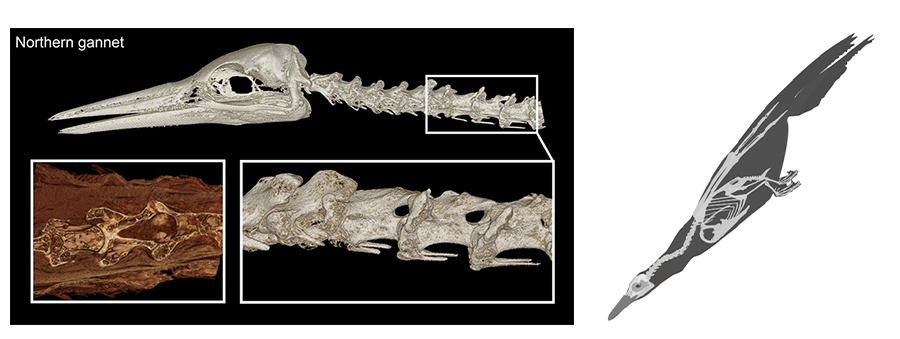

“We want to learn from the gannet how to intelligently segment a structure to reduce the magnitude of a shock energy by stretching it over time.”
The experimental setup
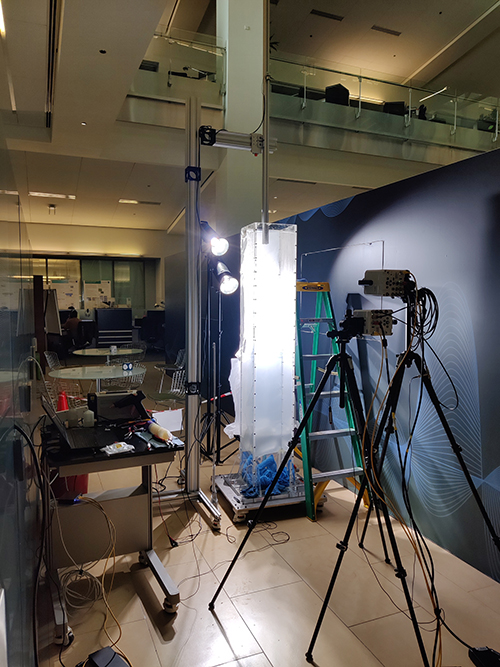
Boom teamed up with water entry expert Professor Tadd Truscott at KAUST Splash Lab, and vertebrate swimming expert Professor Frank Fish at West Chester University. Both have extensive experience in hydrodynamic morphology and water entry analysis.
Their lab setup at the Splash Lab included a plexiglass water tank for clear observation, two high-speed cameras capturing every millisecond of impact, bright backlighting for maximum visibility, and remote sensing equipment for precise measurements.
The team designed prototypes consisting of a head and body segment connected with springs of varying stiffness. By dropping these “divers” from varying heights, they could alter the spring’s stiffness and also swap out the head to test the effects of different head shapes.
“One camera focused on the air-water interface while the other captured the air cavity created as the prototype displaced water,” Boom explains. “This allowed us to see excactly what happens during those crucial milliseconds of impact.”
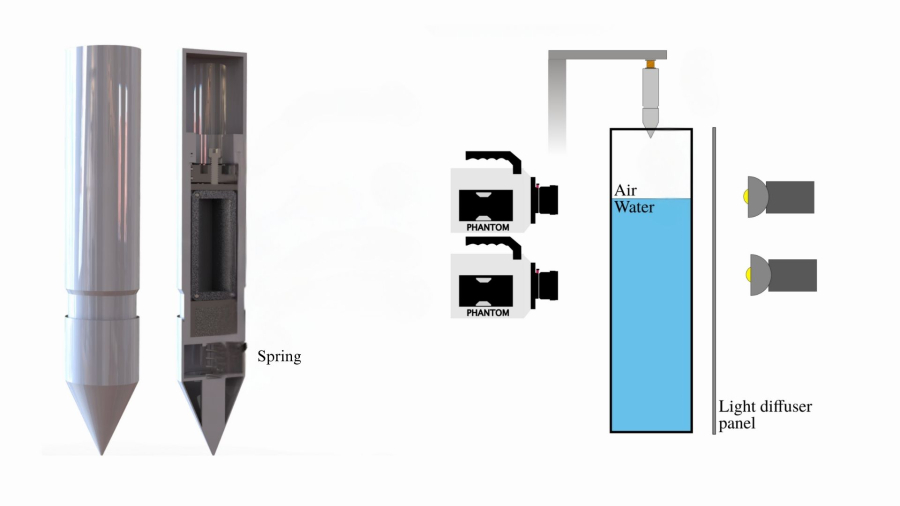
Stunning results that could change everything
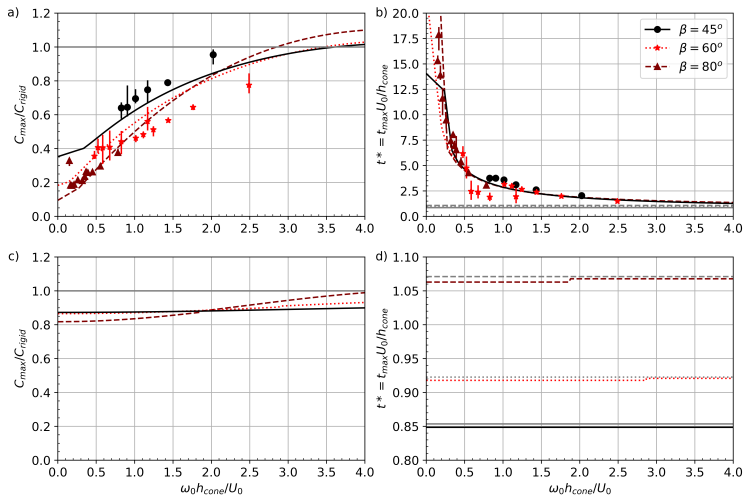
The results exceeded everyone’s expectations. The segmented design showed a stunning reduction of over 50 percent in maximum impact acceleration and 94 percent in the speed at which the acceleration is changing, or jerk, leading to significant improvement in overall impact resistance.
To put this in perspective, jerk is what causes whiplash in car accidents. A 94 percent reduction could mean the difference between walking away from a crash and serious injury. Truscott explains, "For a given impact, you might think that adding a spring damps out the impact, but the impulse, or energy loss, is the same and only stretches out the impact. The result is that the peak forces are lower.”
The research revealed something else remarkable: the sleek geometry of the diver’s head facilitates efficient water entry, and while springs lower peak force across all designs, the effect is even greater for less efficient head geometries.
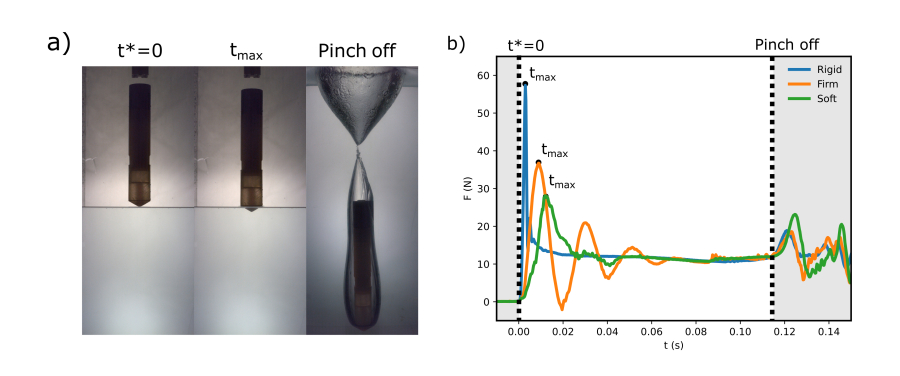
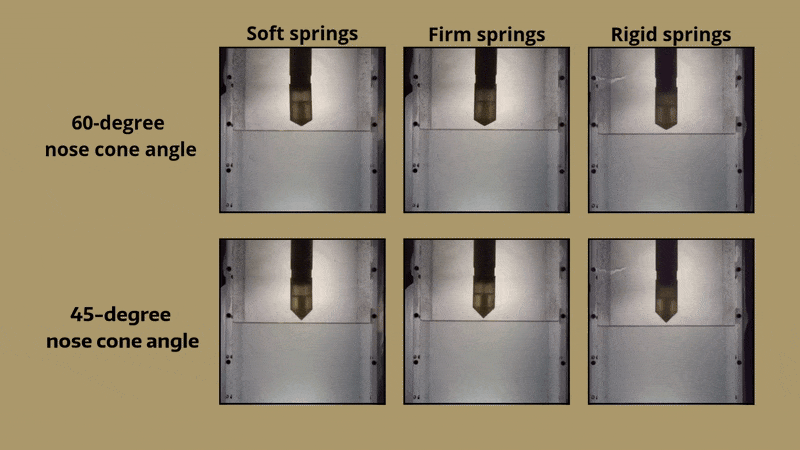
“We intend to empower engineers with a simple design tool for smart structural segmentation to mitigate shock and vibration damage in aircraft, automobiles, robots, and bridges...”
Where is this research going?
Boom’s faculty adviser, Assistant Professor Ed Habtour, explains the overarching vision:, “We want to learn from the gannet how to intelligently segment a structure to reduce the magnitude of a shock energy by stretching it over time. We intend to empower engineers with a simple design tool for smart structural segmentation to mitigate shock and vibration damage in aircraft, automobiles, robots, and bridges without using current solutions such as heavy mechanical dampers and expensive exotic materials.”
Boom says there is more analysis to do on the gannet neck structure, “Not only is the neck highly segmented, but it is held together by a complex muscle-tendon structure. Our findings suggest that this plays a crucial role in controlling the propagation of shock energy through the neck. As we understand that more, we can engineer connections between the discrete segments better in our systems to enable sustainable and energy-efficient solutions for mitigating impact without the need for adding inconvenience and inefficiency of conventional dampers.”
Go to the sources
Dive deeper into this research through the team's published work and ongoing projects. The complete study, "Tuning body shape and stiffness to reduce water slamming forces," by Bart Boom, Tadd Truscott, Frank Fish, and Ed Habtour, appears in Ocean Engineering in 2025, with research data made available for public use on GitHub.
For those interested in seeing how this research translates to practical applications, Bart Boom's poster" Plunge Dynamics: Compliance to reduce diving impact forces" from the 2024 A&A Graduate Research Showcase offers an accessible overview of the work. The gannet-inspired innovations continue to expand beyond the lab — the Illimited Lab recently advised and supported a 2024 capstone project that developed the Fly & Swim Drone. View the fun summary video, demonstrating how nature's lessons are already shaping the next generation of technology.